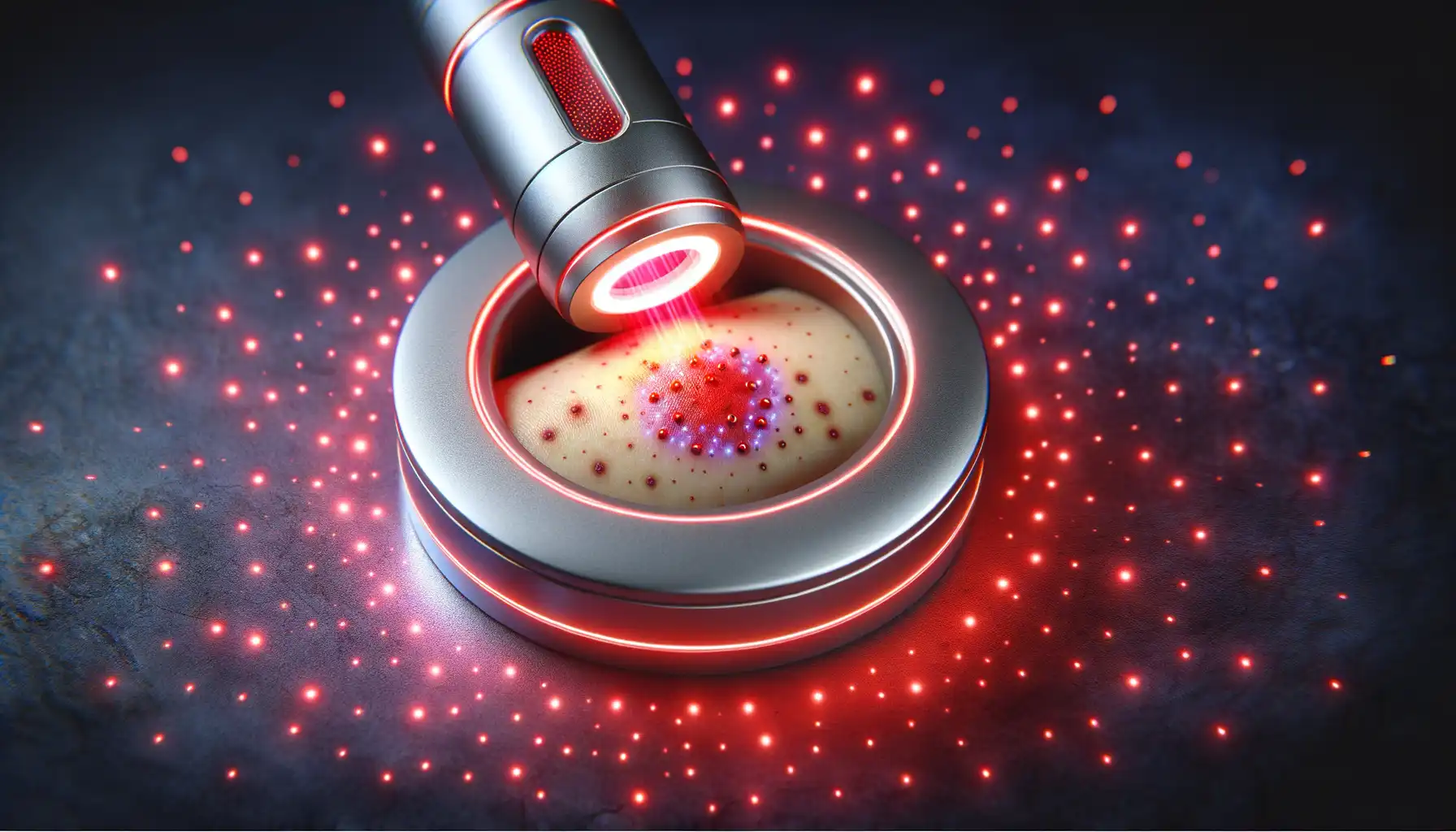We'll look into what makes an infrared sauna different from the saunas you might be used to, and what the science says about its potential benefits. From supporting clearer breathing to helping you unwind after a stressful day, we’ll cover how this gentle heat could become a valuable part of your wellness routine.
What Exactly Is an Infrared Sauna?
You've probably seen a traditional sauna—think hot rocks, steam, and high temperatures. An infrared sauna takes a different approach. Instead of heating the air around you, it uses special infrared heaters to emit light waves that your body absorbs directly.
This process, called radiant heating, warms your body from the inside out. The result is a deep, penetrating warmth that gets you sweating at a much lower temperature, typically between 120°F and 150°F (49°C to 65°C). traditional saunas, by contrast, can reach temperatures of 180°F (82°C) or higher. For many people, this lower-temperature experience is more comfortable and allows for longer sessions.
If you’re curious about the science behind infrared sauna therapy, Harvard Medical School offers a helpful overview.
Infrared vs. Traditional Saunas: What's the Difference?
The key difference lies in the heating method.
Traditional Saunas: These heat the air in the room, which then heats your body. They often use steam, creating a hot and humid environment.
infrared saunas: These use infrared light to heat your body directly, without significantly warming the air. The heat penetrates more deeply into your muscle tissues and organs.
Because infrared saunas operate at a lower temperature, they can be a more approachable option for people who find the intense heat of a traditional sauna overwhelming. This gentler environment allows you to enjoy the benefits of a good sweat without the discomfort of extreme air temperatures.
Can an Infrared Sauna Really help you breathe better?
The idea that heat can help with respiratory issues isn't new. Think about how a warm bowl of soup or a steamy shower can feel soothing when you have a cold. Infrared saunas build on this concept, and emerging research points to several ways they may support respiratory health.
Easing Congestion and Opening Airways
The gentle, radiant heat from an infrared sauna can help promote better circulation throughout your body, including your respiratory system. This improved blood flow may help reduce inflammation in your sinuses and airways. When you're congested, your airways are often swollen and constricted. The warmth can help soothe this inflammation, potentially making it easier to breathe.
As your body temperature rises, it can also help to thin mucus, allowing it to be cleared from your lungs and nasal passages more easily. While more specific research on infrared saunas is needed, studies on traditional sauna use have shown positive effects. One study published in the European Journal of Epidemiology found that frequent sauna bathing was associated with a reduced risk of respiratory diseases. While the mechanism is different, the core principle of using heat to support lung function is similar.
Infrared saunas are sometimes mentioned in the context of pulmonary health. The American Lung Association discusses how humidity and warmth can affect breathing, especially in those with underlying conditions.
Supporting a Healthy Immune Response
Your respiratory health is closely tied to your immune system. An infrared sauna session causes a temporary, mild increase in your core body temperature, similar to a low-grade fever. This process, known as hyperthermia, can stimulate your body's immune response.
A stronger immune system is better equipped to fight off the viruses and bacteria that can lead to respiratory illnesses like the common cold or bronchitis. Consistent use of an infrared sauna may help keep your immune defenses primed and ready to go.
The National Institutes of Health notes that raising core body temperature may play a role in immune system modulation, although more large-scale studies are still needed in the context of infrared technology.
Beyond Breathing: More Sauna Benefits for Your Well-being
While the potential for better respiratory health is a major draw, the benefits of an infrared sauna extend to your entire body. It’s a holistic wellness tool that supports multiple systems at once.
Enhanced Circulation and Detoxification
Sweating is one of your body's primary methods of detoxification. As the infrared heat penetrates your tissues, it increases your heart rate and promotes vigorous sweating, helping you flush out metabolic waste and environmental toxins.
This process is fueled by improved circulation. As your core temperature rises, your blood vessels widen to help cool your body down, moving blood more efficiently. Better circulation delivers more oxygen and nutrients to your cells, which is crucial for everything from muscle repair to brain function.
Deep Relaxation and Stress Relief
In our busy lives, finding a moment of true quiet can be a challenge. An infrared sauna session provides a sanctuary for stress relief. The enveloping warmth is incredibly soothing and helps relax tense muscles.
More importantly, it can help lower cortisol, your body's primary stress hormone. As cortisol levels drop, you feel calmer and more centered. Many people find that a regular sauna practice helps them manage daily stress and promotes a more balanced mood. The National Center for Complementary and Integrative Health (NCCIH) notes that practices promoting relaxation can be effective tools for managing stress and its physical effects.
Better Sleep Quality
The deep relaxation from a sauna session can pave the way for a better night's sleep. The rise in body temperature followed by a gradual cool-down in the evening mimics your body's natural circadian rhythm, signaling that it's time to rest.
If you struggle with falling asleep or staying asleep, incorporating an infrared sauna session into your evening routine a few hours before bed could make a noticeable difference. The combination of muscle relaxation and hormonal regulation creates the perfect conditions for restful, restorative sleep.
A publication from the Sleep Foundation discusses how heat exposure can influence sleep patterns and quality, which supports the logic of sauna-induced relaxation before bed.
Skin Rejuvenation and a Healthy Glow
Your skin is your body's largest organ, and it loves a good sweat. The increased circulation from an infrared sauna session delivers more oxygenated blood to your skin cells. This helps promote collagen production, which improves skin elasticity and tone.
Sweating also cleanses your pores from the inside out, helping to clear out debris and bacteria that can lead to breakouts. The result is often clearer, smoother, and more radiant-looking skin.
Post-Workout Muscle Recovery
Athletes have long used saunas to help with recovery, and infrared saunas are particularly effective. The deep-penetrating heat helps soothe sore muscles and reduce inflammation after a tough workout.
By increasing blood flow to tired muscle tissues, the sauna helps speed up the repair process and reduces delayed onset muscle soreness (DOMS). This means you can get back to your training faster and with less discomfort.
More about sauna benefits for recovery and overall wellness is available in resources from the World Health Organization.
Safety First: Who Should Use an Infrared Sauna?
Infrared saunas are generally safe for most healthy adults, but it's important to be smart about using them.
Always stay hydrated. Drink plenty of water before, during, and after your session to replace the fluids you lose through sweating.
It's also crucial to listen to your body. If you start to feel dizzy, nauseous, or lightheaded, end your session immediately. Start with shorter sessions (10-15 minutes) and gradually increase the duration as you get comfortable.
Who Should Be Cautious or Avoid Saunas?
Certain individuals should either avoid infrared saunas or consult a healthcare provider before using one. According to a review in the Mayo Clinic Proceedings, while sauna bathing is safe for many, caution is warranted for some. This includes:
Pregnant Women: The effects of elevated body temperature on a developing fetus are not well understood.
Individuals with Certain Heart Conditions: People with unstable angina, recent heart attack, or severe aortic stenosis should avoid saunas. If you have any cardiovascular issues, talk to your doctor first.
People with Low Blood Pressure: Saunas can temporarily lower blood pressure, which could cause dizziness or fainting in those who already have hypotension.
Anyone Taking Medications: Some medications can be affected by increased body temperature or dehydration. Check with your doctor or pharmacist.
Those with Reduced Sensation: If you have nerve damage that reduces your ability to feel heat, you are at a higher risk for burns.
When in doubt, always have a conversation with your healthcare provider to ensure an infrared sauna is a safe choice for you.
Getting the Most Out of Your Session: Best Practices
Ready to give it a try? Here are a few tips to make your infrared sauna experience as beneficial as possible:
Hydrate Well: Drink a glass or two of water before you go in. Keep a water bottle with you to sip during your session.
Start Slow: Begin with 15-minute sessions at a lower temperature. You can work your way up to 30-40 minutes as your body adapts.
Choose the Right Time: Some people prefer a morning session to feel energized for the day, while others use it in the evening to wind down for sleep.
Rinse Off Afterward: A quick shower after your session helps rinse the sweat and toxins from your skin.
Listen to Your Body: This is the most important rule. If you feel uncomfortable, it's time to get out. Consistency is more important than intensity.
A Warm Path to Wellness
An infrared sauna offers a gentle yet powerful way to support your overall health. From helping you breathe a little easier to melting away stress and promoting restful sleep, the benefits are wide-ranging. By understanding how it works and using it safely, you can make it a valuable and enjoyable part of your wellness journey.
If you're looking for a natural way to support your respiratory system and enhance your well-being, an infrared sauna might be just what you need. As always, consider talking to a trusted healthcare provider to see if it’s the right fit for your health goals.



